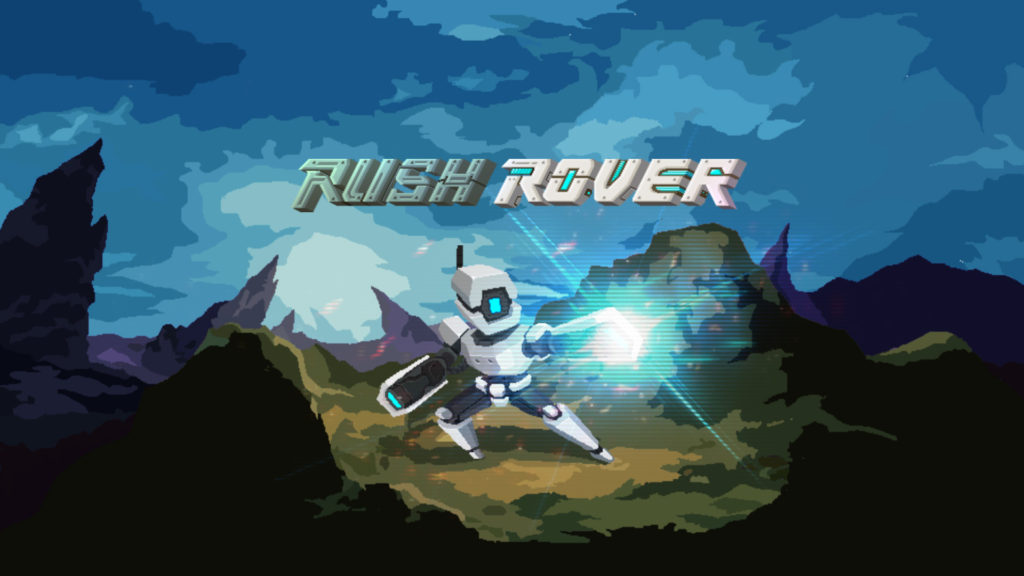
Currently, one of the most prolific publishers of small, low cost indie titles is Ratalaika Games. They pretty much exclusively print games under $10 for all systems and their release catalog is fast becoming fairly substantial. While games of this type are generally classified as shovelware, or garbage games to make a quick buck, what’s interesting about Ratalaika is that the volume of content they are releasing is so high that the average quality of their games is rapidly rising. Sure, they’re not all the greatest titles out there, but they can often be had for a buck or two on sale, and some of them are surprisingly fun. And that brings us to Rush Rover, the latest Ratalaika release created by solo programmer and creator Chengjin Wu (aka Radio). Rush Rover is a very straightforward arena based action game from a top down perspective. You’re a mining rover rushing to survive an onslaught of enemy robots as you upgrade and build your robot up. It’s a simple concept with basic 8-bit style graphics and it’s surprisingly fun!
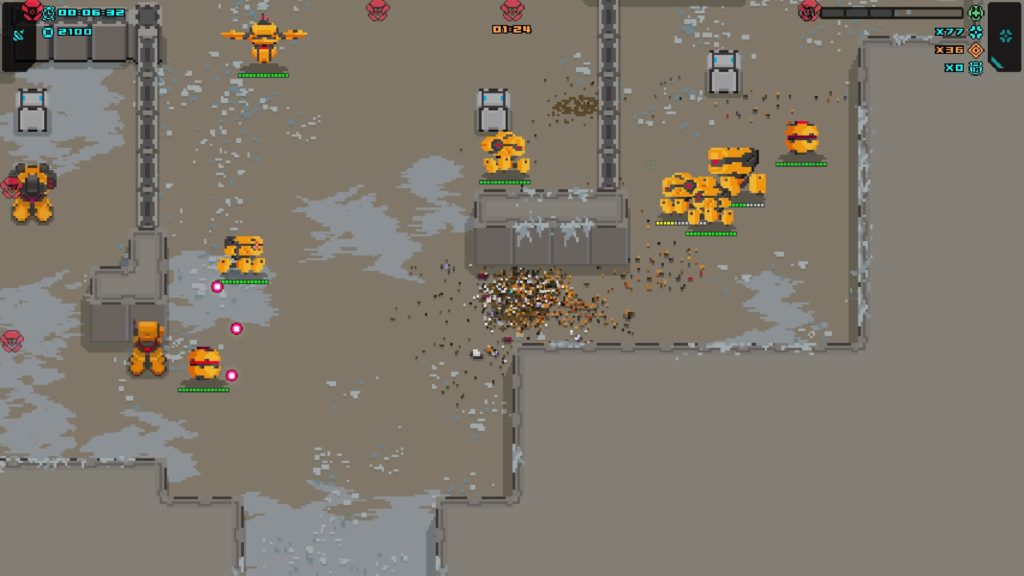
In Rush Rover, you start out with a basic weapon and a floating probe that helps you. Walk into the next room and you’re assailed by enemy robots. Simply fire at them until they’re dead, using a standardized twin stick control scheme. There’s very little complexity in Rush Rover. Fire, dodge bullets, move on. Beat the room within a time limit and you get extra rewards. Same goes for not taking a hit. You can use those bonuses to upgrade your rover’s systems, including speed, firepower, alternate weapons, and extra slots for upgrades. In addition, you find various upgrades by killing enemies and destroying the environment to access locked areas as well.
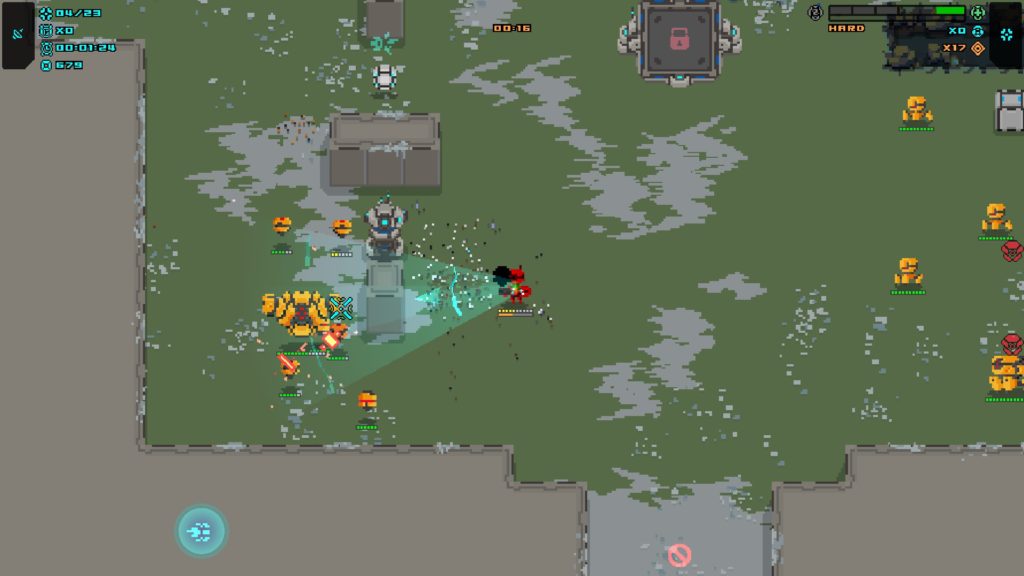
Each level is randomized, as are the upgrade drops in Rush Rover, so no two playthroughs will be exactly the same. After a few levels, you’ll hit your first boss fight and they’re interesting. Boss fights resemble shmup battles with medium and large bullet patterns streaming out of the bosses which you’ll have to weave through. Again, if you manage to take it down in the time limit and take no hits, you’ll maximize your bonus and get more items. The patterns shift as the bosses take damage and they’re fairly well-designed, not too hard, but still challenging. As you progress, the difficulty ramps up and by level 6 or so you’re going to be struggling to survive if you didn’t get the right weapon drops or select the right drone options or upgrades.
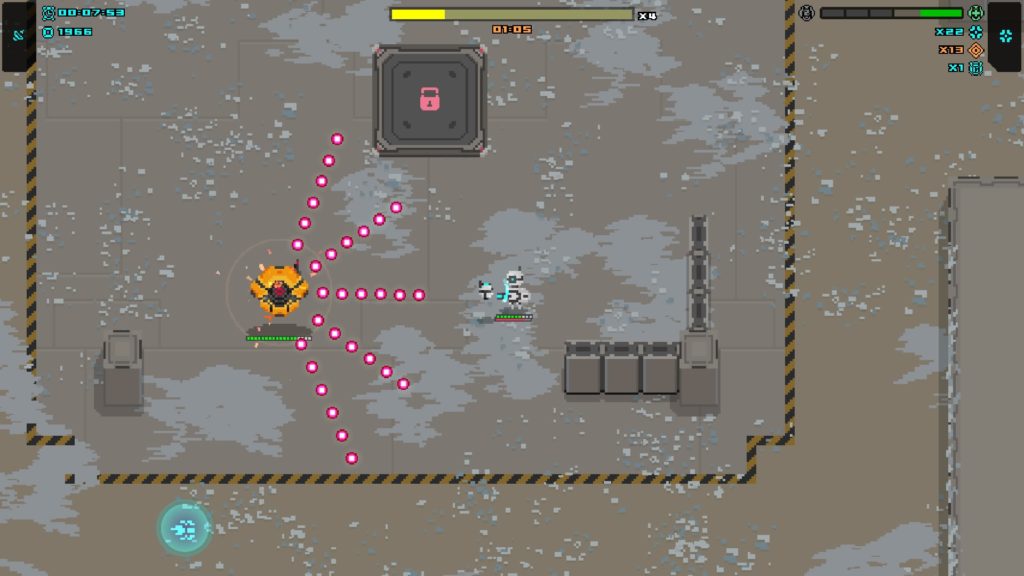
Dashing is also important as it’s your main escape mechanism from a sticky situation. Unfortunately, it’s all too easy to forget you can dodge in the heat of battle, and it takes a while to recharge until you upgrade it, so if you get swarmed, it’s easy to panic. Other than that, it’s a matter of happening upon the right weapon to really manage to survive in Rush Rover, and since things are designed as a rogue-like, that’s a pretty iffy proposition.
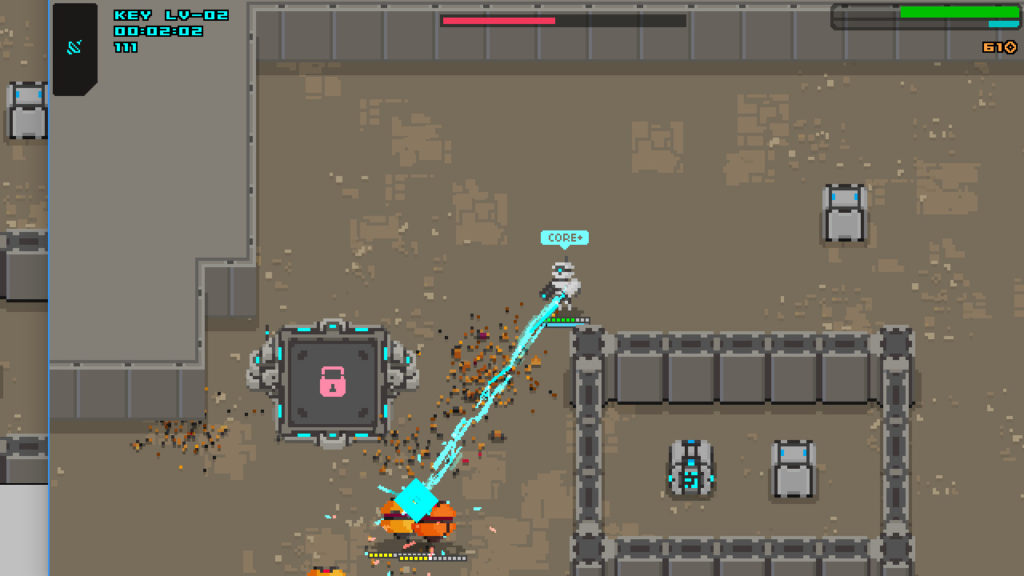
Gameplay and design are solid overall, and Rush Rover is very fun to play. Your rover controls easily, is responsive, and enemies are mostly not unfair. Bullet patterns get pretty nasty pretty fast, especially with the more powerful robots, but you can survive if you’re careful, even if you won’t always get the full room bonuses. There’s even a handy map to show you any powerups you left behind and where the transfer points to different parts of the level are. The music is simple chiptune style but it is enjoyable rather than getting on your nerves and the sound effects are good too. However, not everything is perfect about Rush Rover.
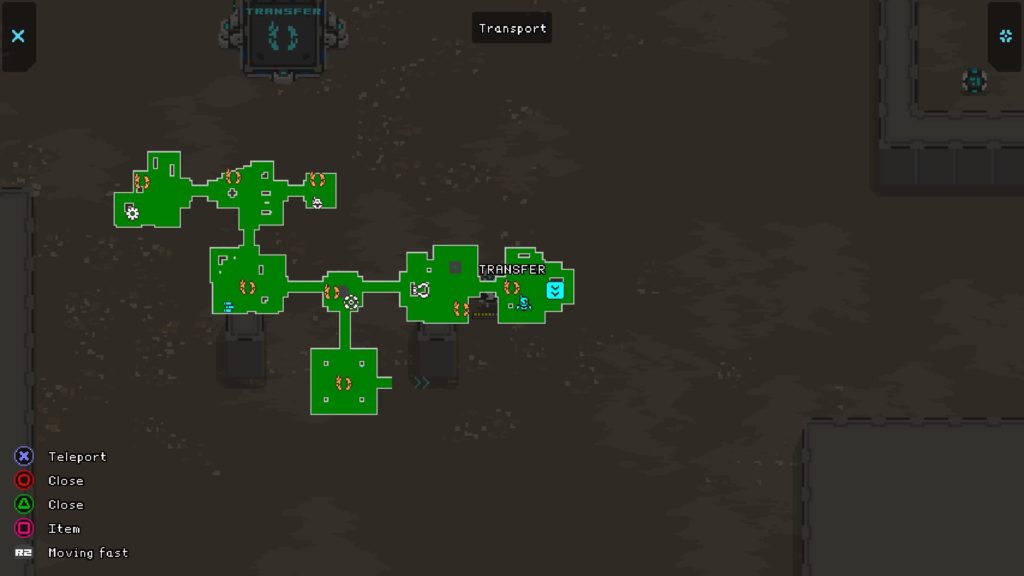
Unfortunately, the biggest mistake in Rush Rover’s design is that if you die, you start over and don’t unlock anything. This is an almost unforgiveable sin in a rogue-like, because as you play, you don’t get anywhere and the difficulty curve doesn’t alter. That means in the higher levels, Rush Rover will always be challenging and you’ll be building up from scratch and playing the early levels each time you make a mistake. It’s somewhat reminiscent of The Binding of Issac in that way, but Issac manages to allow you to unlock things with coins eventually while Rush Rover gives you essentially nothing.
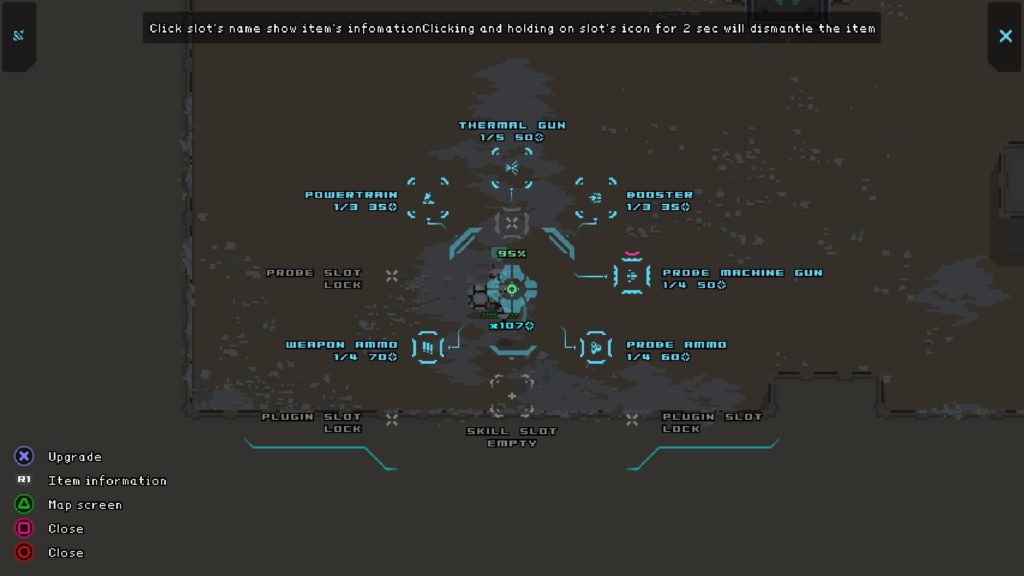
It’s frustrating because you’ll definitely want to play this one, but unlike a game such as Rogue Legacy for example, you’re never building anything up, only repeating the same early levels over and over, hoping for the right loadout and it’s more tedious because there’s no incremental progress. Eventually, most players will get bored of hoping for that perfect game and move on.
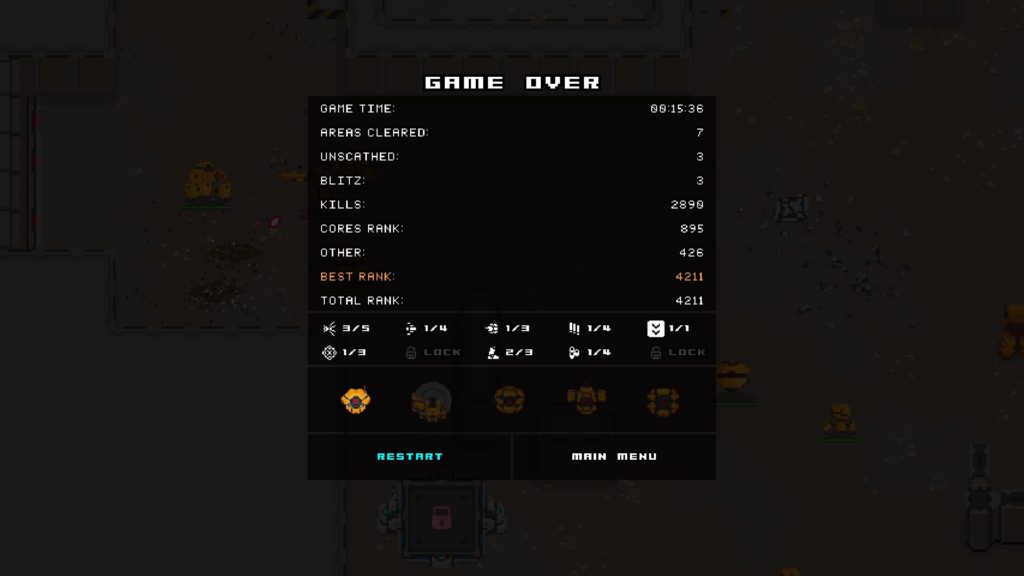
Additionally, the upgrade system in the game is a bit opaque. You can intuit out what some things will do by buying upgrades, but it’s never really explained in the game and you just have to kind of experiment with options, a tall order for a game that makes you start over every time you die. There’s also a Dodge mode included in Rush Rover, but it’s hard as hell. Simply see how long you can dodge an infinite variety of randomized bullet patterns. It’s not very fun, but at least it’s there. There’s also a co-op feature included in the game, but it wasn’t attempted for this review. The main game is by far the star here.
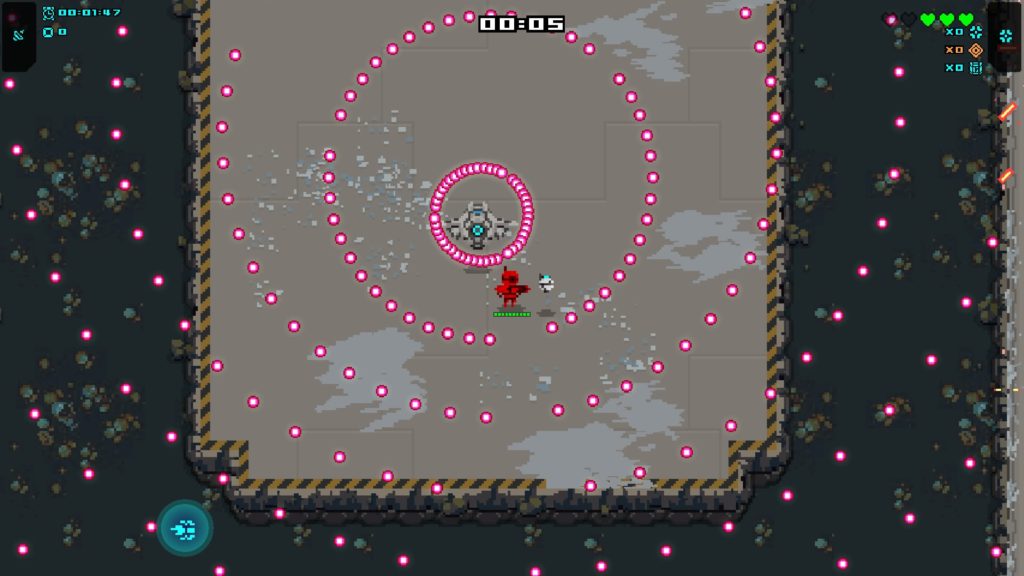
Rush Rover is a solid game offered at a very reasonable $5 and you’ll definitely get your money’s worth out of it. It’s also a flawed game that with a few fairly simple tweaks could be an addictive smash hit. Unfortunately, those aren’t present currently, but it’s still a solid budget priced title that’s fun to play for more than a few hours, especially if you like twin stick shooters, retro graphics, and chip tunes!
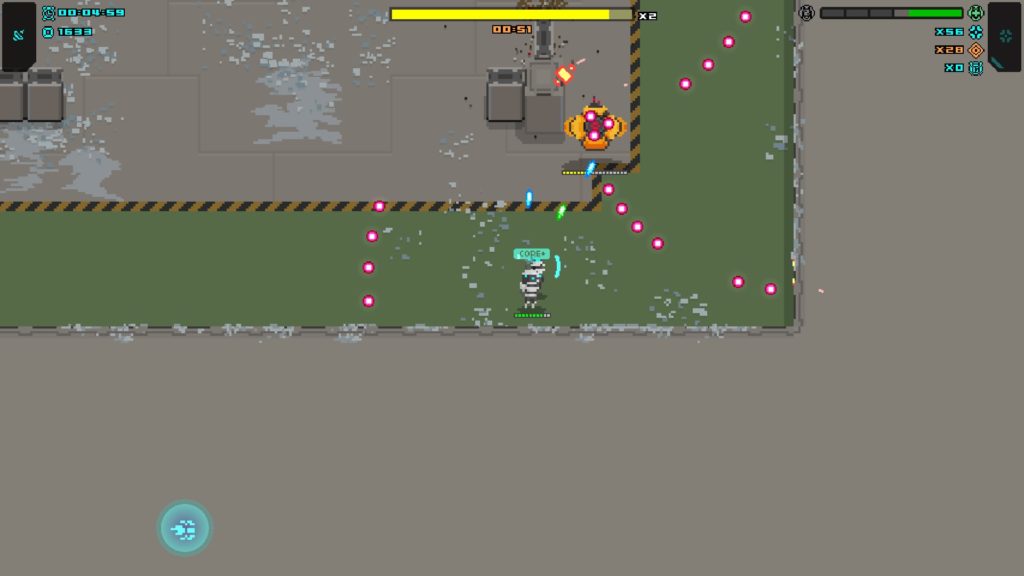
This review was based on a digital copy of Rush Rover provided by the publisher. It was played with a PS4 Pro on a 55” 1080p Sony LED TV. Rush Rover is cross-play on the PS4 and entitles you to a Vita copy of the game at no extra charge. It is also available for Xbox One, Nintendo Switch, and Steam.

